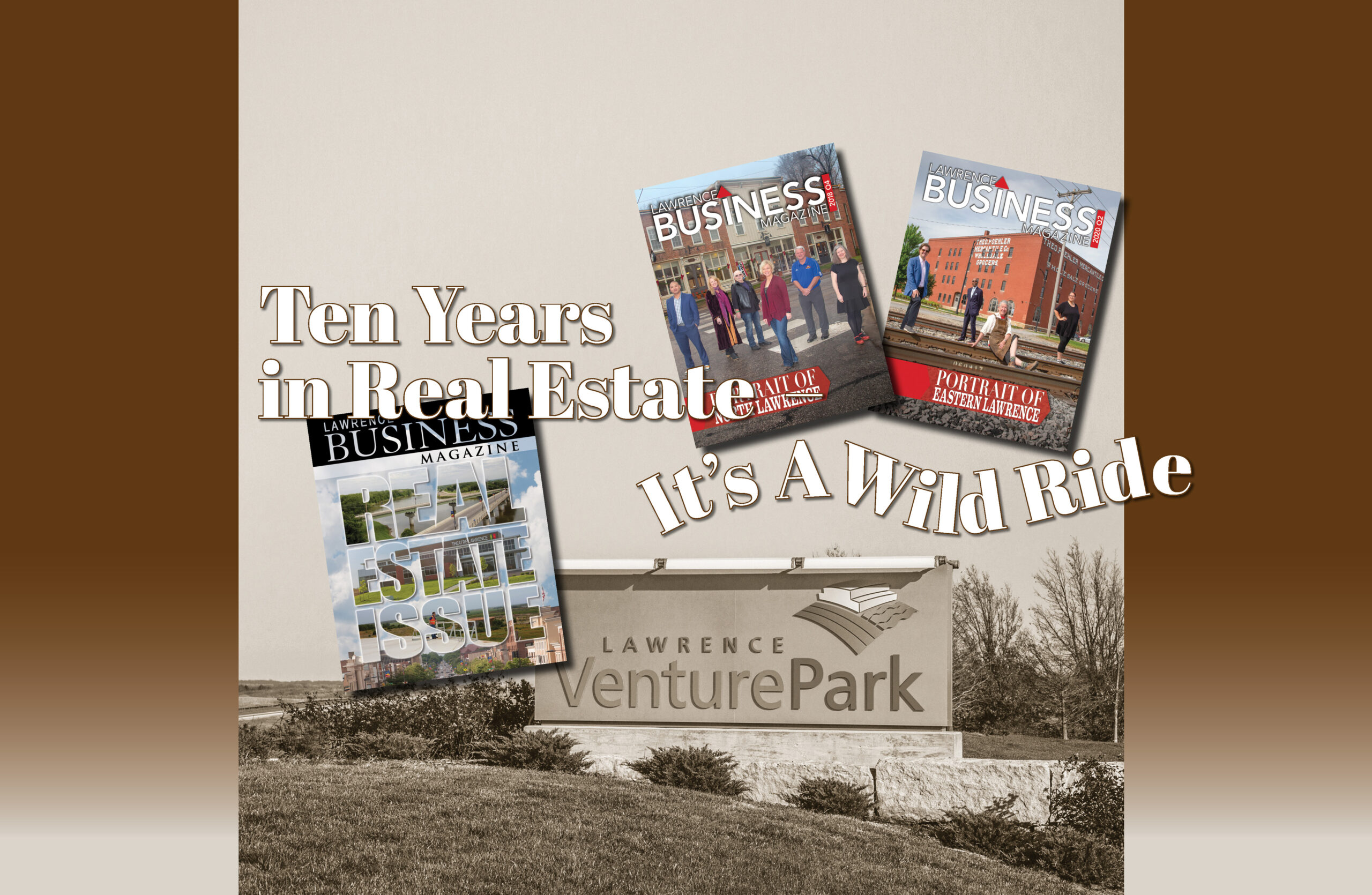| story by | |
| photos by | Steven Hertzog |
| OPEN A PDF OF THE ARTICLE |
The real estate market in Lawrence has gone through a process of change in the last 10 years that’s inexplicable to many in the industry.
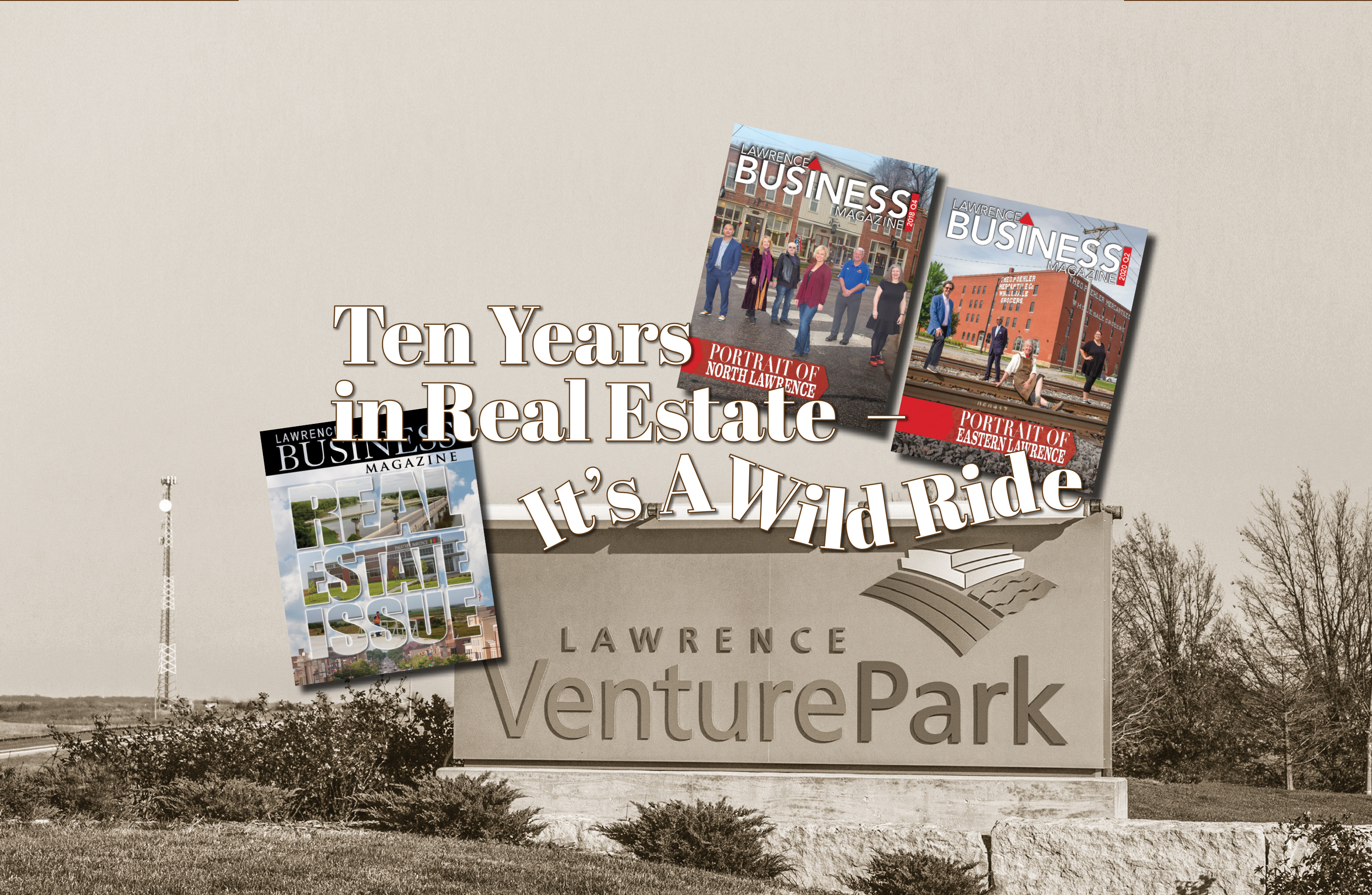
LBM Cover Real Estate Issue (2013Q2), Portrait of North Lawrence (2018Q4) and Portrait of East Lawrence (2020Q2); Lawrence Venture Park (2014Q2)
Let’s all clear our hindsight vision. Look back through the haze of this past 18 months and get a full picture of real estate and development the past decade in Lawrence.
This 10-year period, 2011 through 2021, in Lawrence’s history may just have some of what could become the largest and most impactful events and developments for the city as a whole ever. Places that will exist for decades to come, decisions and intentions that will forever leave imprints, and, of course, outside forces that permanently have wound their way into the city’s fabric.
2011 to 2015
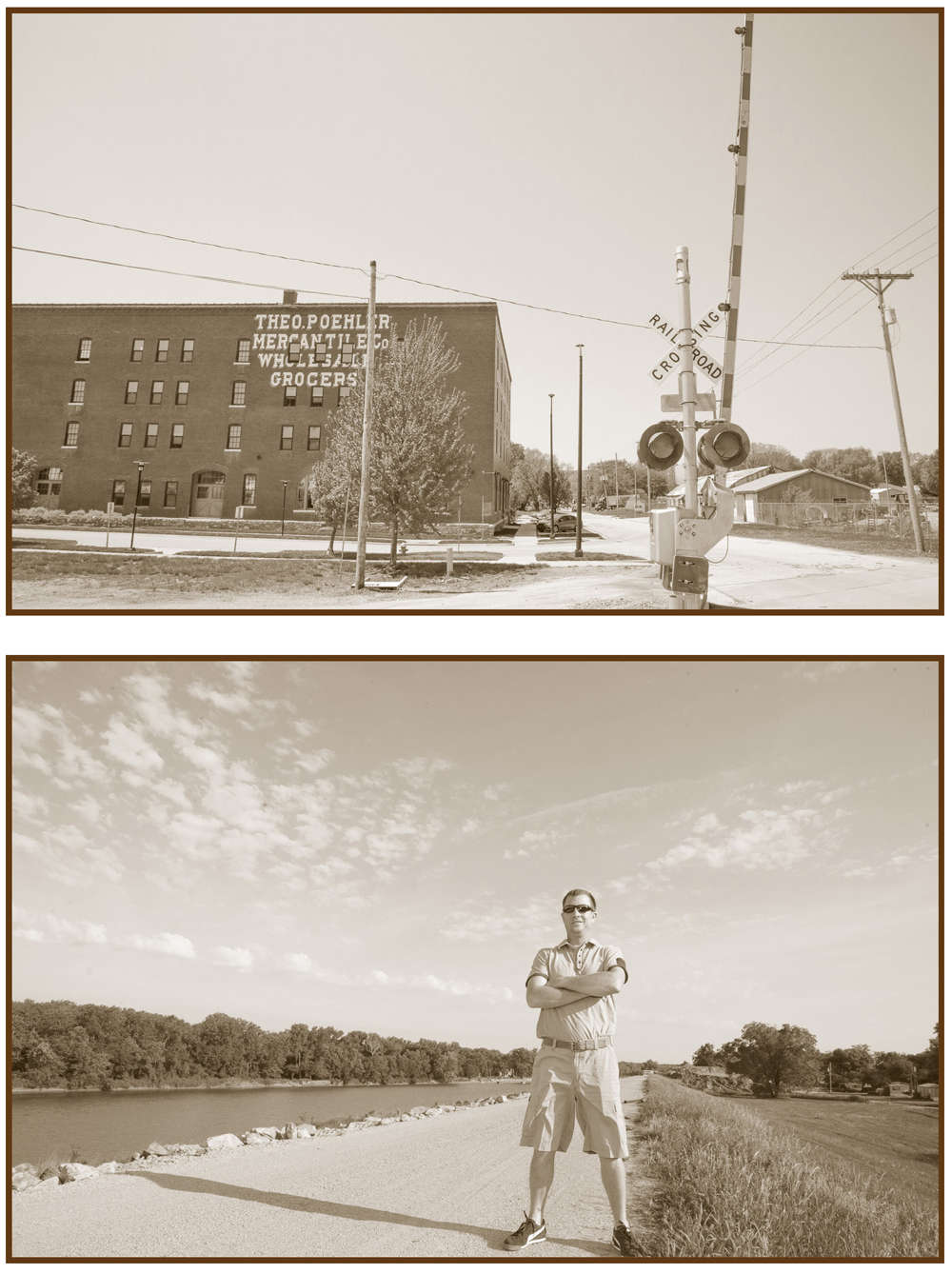
Train track in East Lawrence (2020Q2) and Jeff Hatfield, owner of Larry A. Hatfield Appraisals (2012Q2)
Local experts agree it took about six or seven years for local residential real estate and development to recover fully from the 2008 market crash.
“Lawrence has mirrored what has gone on in the country as a whole and has done a good job of trying to control uncontrolled growth since the recession in 2008,” says Jeff Hatfield, owner of Larry A. Hatfield Appraisals.
To bring this time period into focus, the first residences in the Warehouse Arts District opened in 2012, along with art galleries and the beginnings of other building renovations that would lead to multiple new businesses.
“We can see now those buildings were becoming an eclectic mix of workspace. Multiple-use groups allowed for a vibrancy in East Lawrence that we hadn’t seen in a long time,” Hatfield explains.
With new multifamily residences on-site in revamped older buildings and other East Lawrence rental and owner-occupied homes nearby, the Warehouse Arts District reflected growing national interest in urban cores.
“Walkability and convenience to amenities was important to both young and older buyers, and the library and new businesses in East Lawrence affected that,” says Oliver Minnis, partner in Stephens Real Estate.
In 2014, the city financed two large projects: Rock Chalk Park/Sports Pavilion Lawrence, in what expanded the city’s western reach, and the Lawrence Public Library renovation, in central Lawrence. Rock Chalk Park is a partnership between the city and the University of Kansas, and Sports Pavilion Lawrence provides a community center for the west side of town, as well as a large facility for sports tournaments.
“When we travel, we run into people all the time who say they know Lawrence because their kid played in a volleyball or basketball tournament at Rock Chalk Park,” says Bryan Hedges, Hedges Real Estate and Location Properties. “It didn’t take long for that to catch on.”
The library’s downtown location was expanded to include green space for events and a parking garage, in addition to the extensive remodeling of the original building.
As more retirees were drawn to Lawrence, local condo developments such as Bella Sera at the Preserve and the Hobbs Taylor Lofts saw increased demand during this time frame for maintenance-free, congregate living.
Hedges and Minnis say many Lawrence homeowners held on to single-family properties after the 2008 market crash, even as they moved out of the area, and many of those homes became rentals for years until owners felt like they could recoup the value by selling them.
Hedges Real Estate’s sister company, property-management company Location Properties, had major growth during this period postrecession because of all the additional rentals as a result of the recession, Hedges explains. Location Properties became more of a focus for his business, with individual owners-turned-landlords.
New-home construction all but ceased for single-family homes for a time immediately following the 2008 crash and, by 2011, was beginning to crawl back. Numbers of new homes increased each year from 2011 to 2015, but even by 2020, new construction had not reached prerecession rates.
Jeff Crick joined the City of Lawrence Planning and Development office in 2013, and he says city planners were still working on projects that involved recovering from the recession at that time. Even though they knew the area eventually would emerge from the downturn, it was still affecting overall finances several years afterward.
“The recession turned the tap off for a lot of development activity we had seen previously. That gave our office the opportunity to look out in the long range in areas where we hadn’t before. We focused on neighborhood planning efforts in the county, and those plans gave us insight into Plan 2040, which we are just completing,” Crick says.
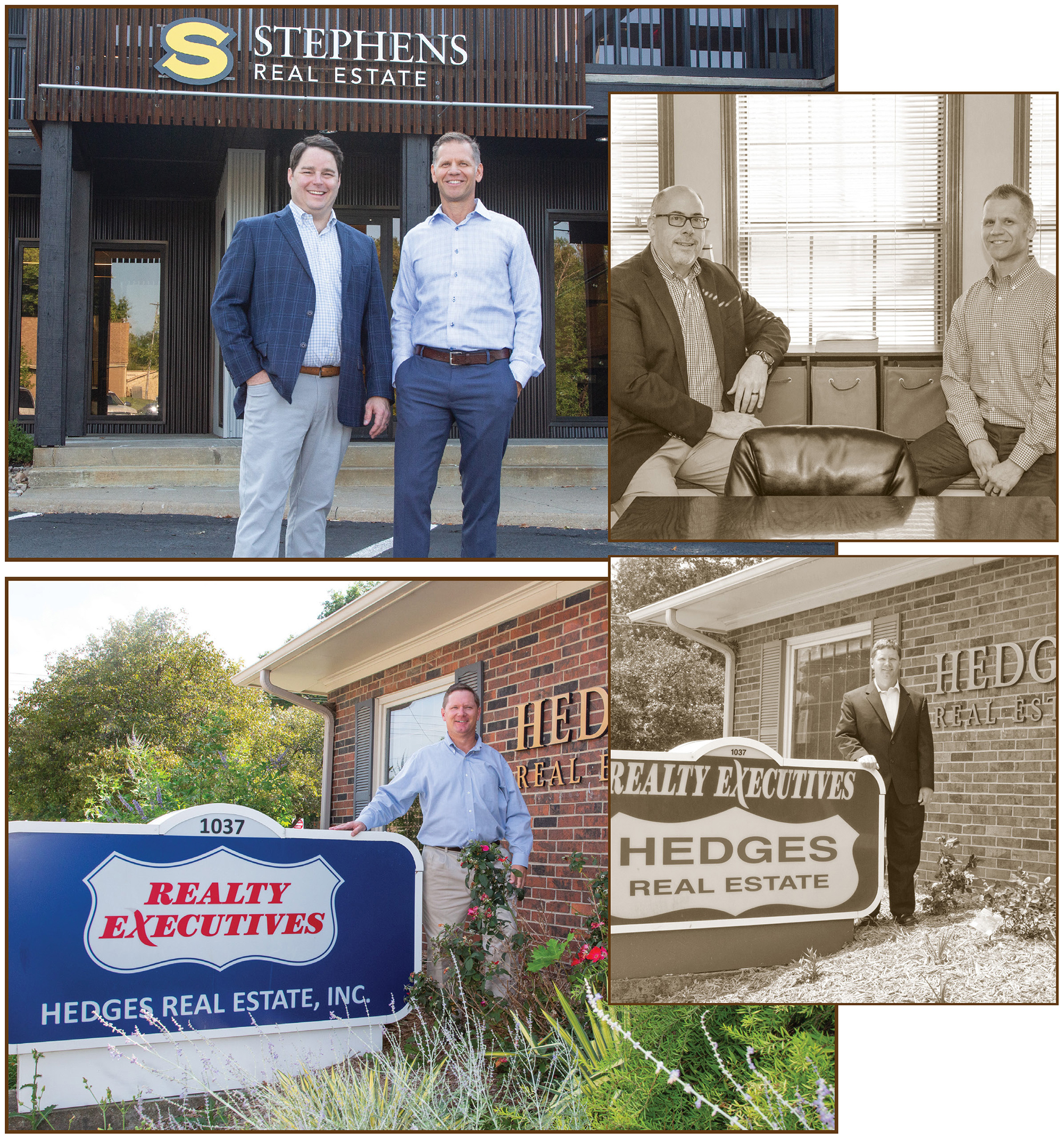
(top l-r) Oliver Minnis and Chris Earl owners of Stephens Real Estate In front of their new building (August 2021) and former owner Pat McCandless and Chris Earl (2017Q1); (bottom l-r) Bryan Hedges owner of Hedges Real Estate (August 2021) and in (2013Q2)
2016 to 2018
Possibly the single most significant development in Douglas County in the past decade was the long-awaited opening of the South Lawrence Trafficway in fall 2016. Connecting Interstate 70 and Highway 59, and also allowing for traffic to bypass the core of 23rd Street, the Trafficway has forever changed the flow of traffic in and around Lawrence.
“Before then, the Trafficway stopped at 37th and Iowa, which a lot of people forget. Places like the VenturePark development are beginning to grow because of the accessibility to get around the city. And now we’re looking at four lanes,” Hatfield says.
The transportation access that the Trafficway allows for definitely has commercial appeal, but the ability to bypass the city also has been a game changer for residents who commute to Topeka or Kansas City.
“It has helped all the neighborhoods that border it and the overall flow for the community. The access coming and going northwest has aided in all the great activity in southeast Lawrence, for example, plus it makes us more appealing and accessible for people outside of town to come into Lawrence,” Minnis explains.
Planning the interchange of the Trafficway with Bob Billings Parkway was a major project for Crick and the city planning and development staff during this time. Bob Billings extended west to connect with the Trafficway and exchange traffic via entrance and exit ramps.
The environmental cleanup and mitigation of VenturePark was wrapping up in the middle part of the decade. “Our office was planning, plotting and permitting VenturePark during this time,” Crick says.
New-home construction was not bouncing back in 2016-18 as many thought it would. Minnis says many of the construction trades were lost during the recession, and that was still affecting building during this time period. But existing home values began to climb during this same time frame, he says, as people moved out of the rentals and leases where they lived during the economic recovery. Residential real estate in Lawrence shifted to a sellers’ market.
The Warehouse Arts District continued to grow both in popularity and size, and it began to affect the surrounding neighborhoods.
“We saw a lot of investment property improvements happen, especially in more homes east of Mass Street, where they were investing to expand and do things like add another bathroom—tenants don’t want to share bathrooms anymore,” Hedges says.
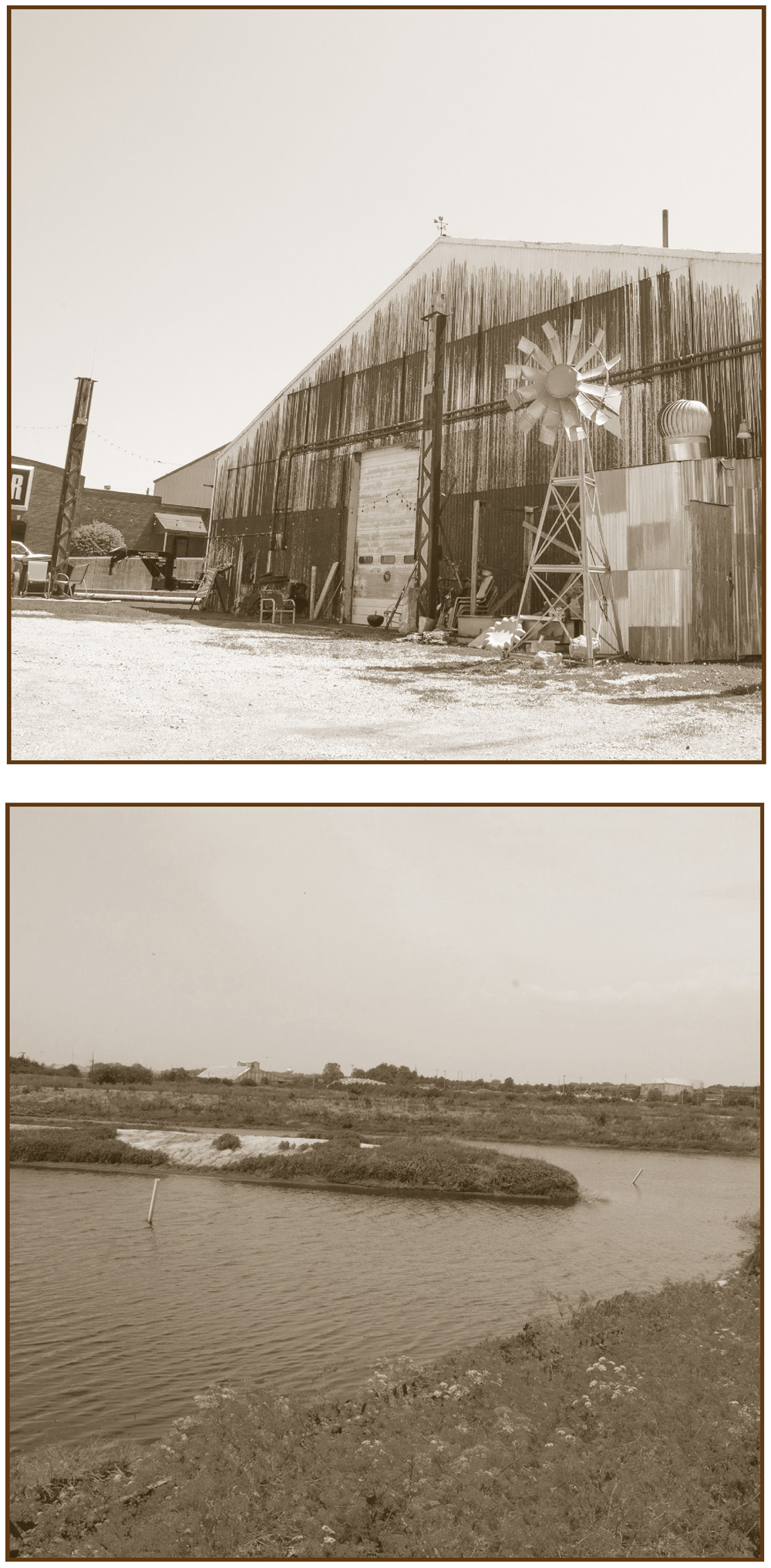
The funky avant-garde art world of East Lawrence (2020Q2; A pond on the Venture Park site (2014Q2))
2018 to Early 2020
The two years preceding the pandemic were successful, if gentle, times in Lawrence residential real estate.
“Homes were selling in months, not days, and there were really nice homes available in the $200,000s and lot sales from $30,000 to $50,000. We were helping investors and banks sell from the downturn, and we were starting to see homes selling in the $500,000-plus range,” Hedges explains.
People started buying second homes in Lawrence, he continues, particularly condos and areas with homeowners associations (HOAs) so they would not need to maintain the residence themselves.
Homes of all sizes and values were selling well throughout Lawrence, Hatfield adds.
“There was a good balance. We had southeast Lawrence with their price point for entry and west Lawrence with higher price points,” he says. “We hadn’t seen that for a long time, and at the time, it was sustainable. The development at O’Connell Road was totally different than at Langston Hughes, and they were all complementary.”
The city’s development and planning office saw businesses developing older commercial properties and converting properties that had been vacant on West Sixth, East 23rd and South Iowa streets, Crick says. “We also saw an interest in smaller neighborhood-focused business models in the middle of town, like in North Lawrence and on 19th Street.”
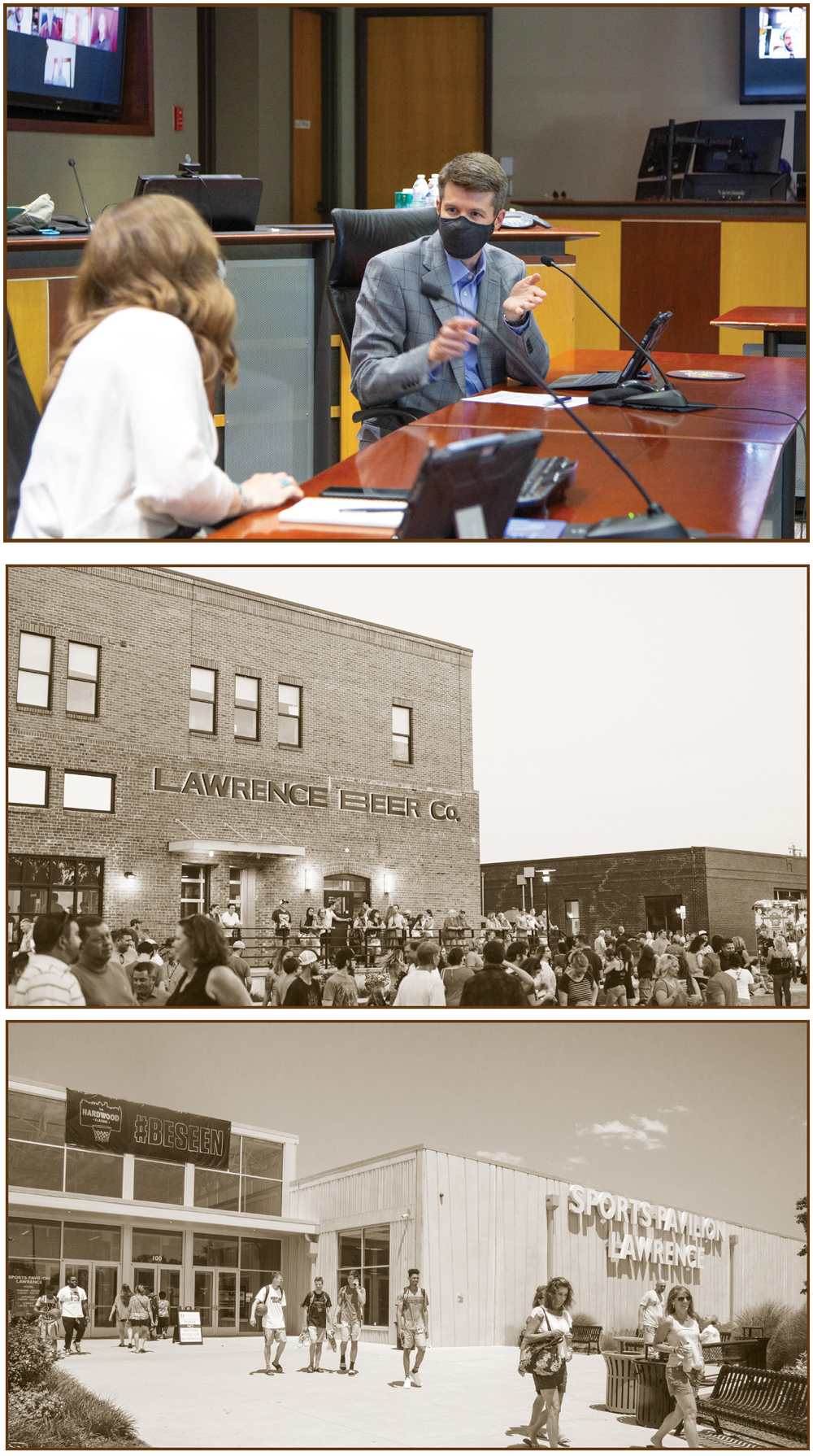
Top: Jeff Crick from the City of Lawrence Planning and Development Director masked up at a public hearing (above) Kansas Food Truck Festival (2019Q2),
Hardwood Basketball Classic at SPL (2017Q3)
2020 to 2021: Pandemic
All of the experts are running out of words to describe what has happened to the residential real estate market since the pandemic began in March 2020. Words like “unprecedented” have become overused, although the residential real estate market certainly is that.
Much of 2020, everything was shut down, but people were still buying and selling homes out of necessity. Local real estate companies, inspectors, appraisers and banks found safe ways to continue operating—often employing digital signatures and, of course, Zoom and FaceTime calls.
In fact, Minnis’ partner at Stephens Real Estate, Chris Earl, says all of that remote work to close a home sale has led to what will be a permanent change in their business: the amount of time it takes from signing the contract to closing and moving in.
“Before the pandemic, we would spend an average of 60 to 75 days in the pending process. Now, it is about 30 to 35 days. Being able to sign and do everything digitally has accelerated us toward a quicker process. The time period is forever compressed from contract to close,” he says.
Beginning fall of 2020 and continuing all of 2021, things have become inexplicable—sales and prices are at all-time highs; home inventories are at all-time lows. The prices are very high, and the inventories are almost scary low, experts say. “Craziness” may be the word most employed when trying to articulate what has unfolded.
Interest rates are low, so those who have kept their jobs throughout the pandemic also can more easily afford to buy. It’s just that in Lawrence, things are a little bit competitive.
“In my 31 years of being in this business, it has been the wildest ride in terms of increase in home values,” Hatfield says.
In order to appraise a home’s value, he continues, the appraiser needs data. Typically, data from the previous one to three months is used. But because homes are so scarce, and there is demand and pent-up demand, homes are receiving multiple offers above the list price. The data appraisers are using now to understand the market price is often most accurate within just 10 days.
“If you have five offers, is that the market? What does that mean for the value of this house? We are seeing escalation clauses in contracts, which automatically increase offers above the highest offer—I had never heard of an escalation clause,” Hatfield says.
Appraisers’ conversions with real estate agents have been crucial to understanding the home values, as well, he adds, because the appraiser can find out how many offers there were and how long the home was on the market before it went under contract, and that can be factored in.
Interestingly, the competition is equally fierce for homes in all parts of Lawrence, Hedges says.
“We’ve had them in Prairie Park go for more than list price and out west go for more than list. Even some areas that weren’t usually popular are more so,” he says.
Commercial development does not seem to be keeping up with residential—so far, at least. That may be due to a shortage of materials and increased prices for materials that are available, but there were significant dips in the numbers of permits and project submittals up to mid-2021, Crick says.
2021 and Beyond
So, what about the next 10 years?
“We are still seeing people process 2020. What will businesses take away from all of this that will change and shape their buildings? Maybe more walk-up windows and bringing the outdoors in with windows and doors that open,” Crick says. “The way that we talk about what we want out of our neighborhoods and communities may change. That will be a thing to watch.”
![]()

